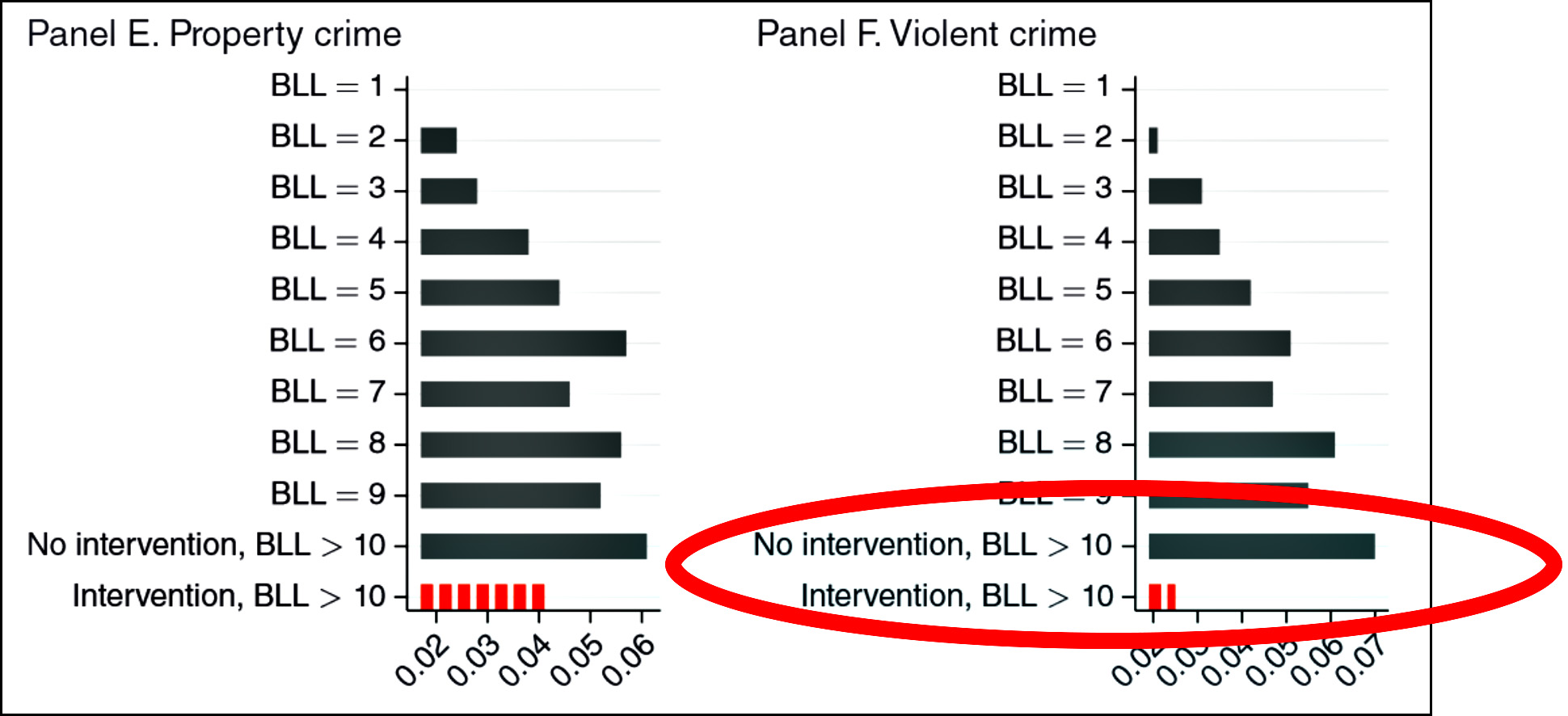A couple of years ago I wrote about a very powerful study that examined the effect of lead poisoning in children on crime rates later in life. It was done by Stephen Billings and Kevin Schnepel, who used data from North Carolina to construct two randomly selected groups of kids, one that received intervention for lead poisoning and one that didn’t. The kids who received intervention to lower their lead levels were far less likely to be arrested for violent crimes when they grew up:

I don’t have any special reason to write about this again except that the final paper has since been published, and a bunch of people pointed it out to me today. In any case, it’s one of the most persuasive studies out there. My original writeup, which has more detail, is here. The paper itself is here.

















